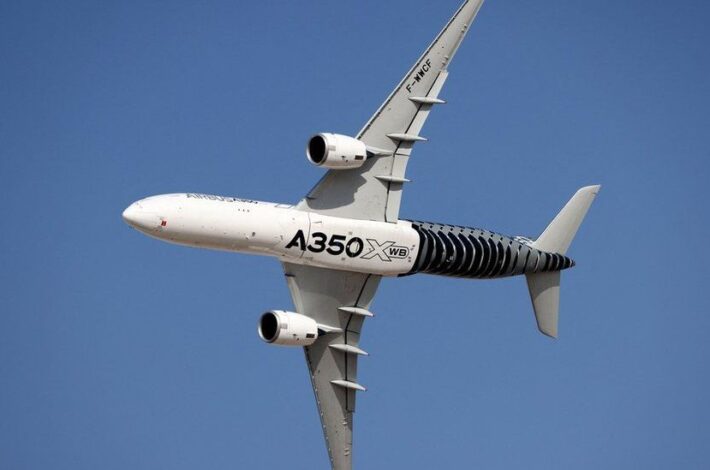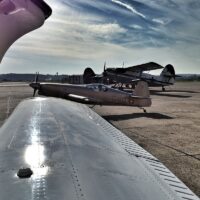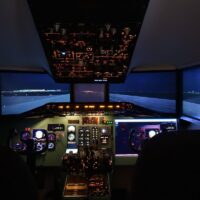
For over three decades, Airbus and Boeing have dominated the market for large passenger jet aircraft, fostering one of the fiercest rivalries in the world. This intense competition has driven technological advancements in aviation to new heights.
Bottom Line Up Front
When comparing Airbus and Boeing, the aircraft models produced by both companies often exhibit similarities but may outperform each other based on their respective generations. The comfort of the aircraft largely depends on the configuration requested by the airline.
In terms of appearance, Boeing aircraft generally have a more aesthetically pleasing design, although the presence of an Airbus A380 can quickly change that perception. Additionally, pilots tend to prefer flying Boeing aircraft due to their lower reliance on automation and the provision of more comprehensive control feedback.
Main Differences Between Airbus and Boeing Fleet
- Nose: Airbuses feature a rounded nose, while Boeings have a pointed nose.
- Windshield: Airbuses have a notched windshield, while Boeings have a V-shaped windshield.
- Front Landing Gear: Airbuses have a longer front landing gear compared to Boeings.
- Rear Landing Gear: The rear landing gear on Airbuses leans backward, whereas Boeings’ landing gear leans forward.
- Tail: Airbuses have a straight tail-end, while Boeings have a sloped tail.
- Controls: Airbuses utilize sidestick controls, whereas Boeings use the conventional yoke.
History
Airbus
Airbus Industrie GIE, now known as Airbus SAS, was established on December 18, 1970, through the consolidation of several European aerospace companies, including Aérospatiale-Matra, DaimlerChrysler Aerospace AG (DASA), Construcciones Aeronáuticas SA (CASA), and British Aerospace plc (BAe).
- The company’s headquarters is located in Blagnac, a suburb of Toulouse, France, where the final assembly of all Airbus aircraft takes place. In 2022, Airbus SAS was valued at 88.91 billion, making it the largest aircraft manufacturer. This achievement is largely attributed to the immense success of the A320, the world’s highest-selling airliner.
- Airbus introduced its first jetliner, the A300, in 1972. As of 2022, the Airbus fleet comprises 11 families of planes, although only six are currently in production. By March 1, 2022, Airbus had received 21,200 orders, with 14,129 deliveries completed and 7,071 orders yet to be fulfilled. Remarkably, 88% of the delivered aircraft remain in active operation.
Boeing
The Boeing Company was founded on July 15, 1916, by William Boeing in Seattle, Washington. Throughout its history, Boeing has grown through the acquisition of other aerospace companies. The present-day corporation was formed on August 4, 1997, following a merger with its long-standing rival, McDonnell Douglas.
- While Boeing’s headquarters have traditionally been in Seattle, the company relocated to Chicago, Illinois, after the merger with McDonnell Douglas. As of 2018, Boeing has experienced a substantial market cap decline of $111.96 billion and is currently valued at 71.41 billion.
- Having entered the jetliner business in 1958, Boeing enjoyed a 14-year head start over Airbus. As of 2022, Boeing has produced ten aircraft families, five of which are no longer in production. By December 31, 2021, the company had received 25,512 orders for its jet airliners, with 19,564 fulfilled and 5,948 yet to be delivered.
Boeing’s 737 platforms had long dominated the narrow-body market. However, the crashes involving the 737 MAX and the subsequent scandal led to the cancellation of 675 orders. In November 2020, the 737 MAX was cleared to fly again after being grounded for one year and seven months. Despite the financial challenges faced, Boeing remains the second-largest producer of commercial jetliners.
Pros and Cons
Airbus
Pros:
- 18″ economy seats;
- Pilots can easily transition between Airbus models with minimal training;
- Enhanced cabin experience in A320 and A380;
- EU subsidies facilitate further development.
Cons:
- Shorter lifespan compared to Boeing aircraft;
- Less control feedback for pilots;
- Higher reliance on automation.
Boeing
Pros:
- Longer lifespan of aircraft;
- Enhanced cabin experience in 777 and 787 models;
- More comprehensive control feedback for pilots.
Cons:
- Narrower 17″ economy seats;
- Additional training required for pilots transitioning to other Boeing aircraft;
- Issues with the MCAS system on the 737 MAX.
Fleet Comparison
In their enduring rivalry, Boeing and Airbus have continually released various aircraft families and introduced incremental changes to outperform each other. The vast number of models makes comprehensive comparison challenging. Therefore, let’s focus on the primary defining trait: body size.
Jumbo-Jet
A notable comparison can be drawn between Boeing 747 and Airbus A380, both double-decker, twin-aisle, quad-engine aircraft designed for long-haul routes while reducing cost per seat. The Boeing 747, affectionately known as “the queen of the skies,” was born out of Pan American Airways’ endeavor to make air travel more accessible, resulting in a larger aircraft with reduced seat costs. With 1,569 deliveries and four more in production as of May 2022, the Boeing 747 boasts an impressive 54-year production run, a testament to engineering marvels.
In response to Boeing’s long-haul market dominance, Airbus introduced the A380, the world’s largest passenger airliner. This colossal double-decker, twin-aisle, quad-engine jumbo-jet accommodated a maximum of 853 passengers and featured an actual upper deck spanning the fuselage length. Despite seating more passengers, offering better range, and the ability to land on smaller runways, the A380 faced economic challenges. During its 14-year production run, only 251 units were manufactured, failing to turn a profit. Airbus acknowledged the program’s marginal profitability, unable to recoup its substantial $31.96 billion development cost.
Twin-Aisle
Both Boeing and Airbus offer multiple aircraft families competing head to head. The Airbus A330 was introduced to challenge Boeing’s dominance with the 767 and its successor, the 787 Dreamliner, while the A350 goes head to head with the 777.
- The A330, originating from the A300 platform, debuted with the A330-300 on January 17, 1994. As of April 30, 2022, the A330 family has received 1,759 orders, with 1,535 aircraft built, making it Airbus’s highest-selling wide-body offering.
- Boeing’s response came in the form of the 787 Dreamliner, succeeding the 767. With similar dimensions, this model accommodates around 200-300 passengers. By April 2022, Boeing had received 1,485 orders for the 787 line and delivered 1,006 aircraft.
- For extended range twin-aisle aircraft, Airbus presents the A350, while Boeing offers the 777. Since 2015, the A350 has received 918 orders, with 480 deliveries thus far.
While the Boeing 777 platform has been in service since 1995, the only direct competitor to the A350 is the next-generation 777X model. Although 320 orders have been placed for the 777X, production delays mean deliveries will commence in 2025.
Single-Aisle
The single-aisle category is fiercely contested as it represents the most profitable segment for both companies. Airbus entered the market in 1988 with the A320, which eventually surpassed the Boeing 737 in sales (excluding the 737 original models).
For decades, the 737 outperformed the A320 until the introduction of the A320neo. The newer A320 model exhibited superior fuel efficiency, overtaking the existing 737 models. In response, Boeing rushed the design and production of their contender, the 737 Max, resulting in two tragic accidents. The global grounding of the 737 Max led to order cancellations, allowing Airbus to surpass Boeing as the leading supplier of single-aisle airliners.
Conclusion
Determining the superior fleet between Boeing and Airbus is not a straightforward task. Boeing’s long-standing experience has set the industry standard, while Airbus, though a younger competitor, has emerged as a resilient adversary. Technical specifications and sales figures alone do not guarantee success. The A380, a marvel of engineering, failed economically, while the 737 outsold the A320 until flawed decisions tarnished its reputation. The ongoing competition between these industry giants continues to shape the future of aviation.

